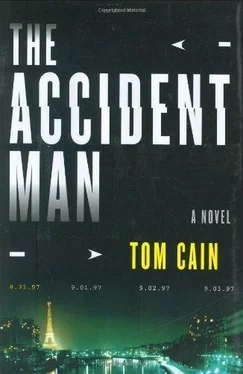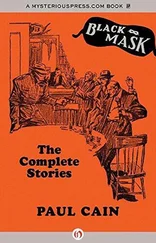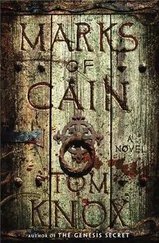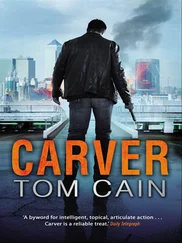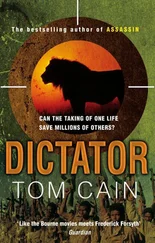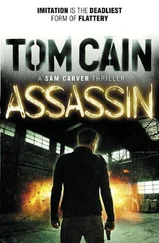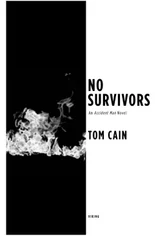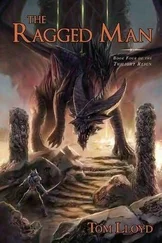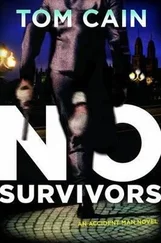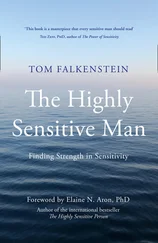Tom Cain - The accident man
Здесь есть возможность читать онлайн «Tom Cain - The accident man» весь текст электронной книги совершенно бесплатно (целиком полную версию без сокращений). В некоторых случаях можно слушать аудио, скачать через торрент в формате fb2 и присутствует краткое содержание. Жанр: Триллер, на английском языке. Описание произведения, (предисловие) а так же отзывы посетителей доступны на портале библиотеки ЛибКат.
- Название:The accident man
- Автор:
- Жанр:
- Год:неизвестен
- ISBN:нет данных
- Рейтинг книги:3 / 5. Голосов: 1
-
Избранное:Добавить в избранное
- Отзывы:
-
Ваша оценка:
- 60
- 1
- 2
- 3
- 4
- 5
The accident man: краткое содержание, описание и аннотация
Предлагаем к чтению аннотацию, описание, краткое содержание или предисловие (зависит от того, что написал сам автор книги «The accident man»). Если вы не нашли необходимую информацию о книге — напишите в комментариях, мы постараемся отыскать её.
The accident man — читать онлайн бесплатно полную книгу (весь текст) целиком
Ниже представлен текст книги, разбитый по страницам. Система сохранения места последней прочитанной страницы, позволяет с удобством читать онлайн бесплатно книгу «The accident man», без необходимости каждый раз заново искать на чём Вы остановились. Поставьте закладку, и сможете в любой момент перейти на страницу, на которой закончили чтение.
Интервал:
Закладка:
Or was there some other reason Max needed him out of the way, something to do with this operation? But what made this operation so different from the rest?
He bore right across the Place de l'Alma, passing right over the car crash he'd caused just a few minutes earlier. As yet there were no ambulances, no police cars' flashing lights. At ground level, there seemed to be no sign at all of any accident.
Carver hit the bridge a hundred meters, maybe a little more, ahead of the Ducati, heading across the river Seine. He was going to make a right and get onto the freeway that ran along the south bank of the river, making for the peripherique, just like before. But he realized that would be crazy. The Ducati was a much bigger, more powerful bike. Even with two onboard it would soon run him down on the open road. He needed a battleground where he could fight his attackers and win.
And then he saw it.
On the far side of the bridge, across the other side of the road, stood a small white kiosk surrounded by low hedges. It looked like a giant geometric mushroom: a short, squat tower topped by a wide, gently sloping octagonal roof. Just in front of it stood a blue sign that read, "Visite des Egouts de Paris."
Carver grinned. He knew what that was. And it would do just fine.
Ahead of him he could see a long articulated bus, its two halves held together by a rubber concertina. It was about to turn left, off the main road that ran along the Left Bank, onto the Alma Bridge, going back the way Carver had just come.
He needed to get across the road. The bus would cut right across his path. He played one last game of chicken, turning his bike hard left, skidding across the path of the oncoming bus, sensing its bulk loom above him, seeing the look of horror on the driver's face.
The bus screeched to a halt in midturn. Or at least its front half did. The rear end kept going, fishtailing as the link between its two halves acted as a hinge, swinging the bus around to the right. Somehow, the driver brought the bus under control before the momentum of the spin flung it onto its side. But now it was sprawled across the bridge, with traffic piling up around it. A perfect roadblock.
Carver brought his bike to a halt beside the kiosk. He jumped off, pulled off his helmet, and grabbed the laser torch.
Next to the kiosk a low, white metal gate guarded a stone stairway that spiraled underground. A sign on the gate read, "Acces interdit"-entry forbidden. He kicked open the gate, then headed down the stairs.
8
The first underground sewer was dug beneath the streets of Paris in 1370. Now there were 1,300 miles of tunnels beneath the city, known as les egouts. They carried away 1.2 million cubic meters of water and waste a day, and they directly followed the lines of the roads up above. Every tunnel was signposted with the name of the avenue, boulevard, street, or square whose filth it removed.
If you wanted to have a gun battle right in the middle of a major city, without anyone noticing, the sewers were the place to have it. But Paris went one better. It didn't just have sewers, it had a sewer museum, a concrete-and-steel warren of tunnels and chambers, right underneath the south end of the Alma Bridge.
Carver scuttled down the narrow stairs, bare concrete walls on either side. At the bottom, the passage turned a sharp left. In front of him was a solid steel door. On it was a white sign with a red banner across it announcing Danger. Below the sign a padlock held a massive bolt in place.
He put a bullet through the padlock, blowing it open, then pushed against the door, which swung away from him into a pitch-black void filled with chill, damp air that smelled of drains. He turned on his dazzler, twisting the end to widen the beam, filling the black void with a ghostly, radioactive green glow. Ahead, the passage seemed to open up into a low, broad chamber. There was another lock on the inside of the door, operated by a metal wheel. Carver closed the door and turned the wheel. There wasn't much chance the guys who were after him would come in that way. Only an idiot would charge down a narrow, dark corridor toward a man known to have a dazzler and almost certainly a gun as well. They'd find another way in. Even so, it never hurt to cover your back.
Carver walked on into the sewers, his torch in his left hand, the SIG-Sauer in his right, trying to work out the direction from which his enemy's attack would come.
The first chamber consisted of two old sewer tunnels that ran side by side. The sewer was filled in with concrete to make a flat floor. The wall between the tunnels had been punctured by a series of low, egg-shaped arches to make a single space. Carver walked through one of the arches, then hurled himself to the ground, bringing his gun to bear as he rolled across the concrete. To his left, in the shadows on the edge of the green dazzler light, he'd seen a group of figures in boiler suits and miners' helmets. It took him half a second to realize they were waxworks, part of the museum's exhibition.
He got up sheepishly and dusted himself off. To his right there was another, smaller tunnel. A notice: "This Way for the Tour." Carver followed it and went deeper into the tunnel. Grigori Kursk had reached the far end of the Alma Bridge a few seconds after Carver. He'd tracked the Englishman right up to the point where he'd pulled that crazy stunt in front of the oncoming bus. By the time the bus had moved out of the way, he'd lost him.
For a second he thought the man had got away. Then, across the far side of the road, he saw Carver's bike abandoned next to the kiosk. He drove the Ducati onto the sidewalk at the end of the bridge, parking it next to a waist-high metal cage that stood over an open manhole. Beneath the cage a metal spiral staircase descended into the ground.
Kursk gestured to his partner to approach the Englishman's abandoned bike from the right. He moved left. The two of them dashed across the bridge. Kursk ran around the front of the stranded bus, while his partner darted between the bus and the cars piling up behind. As they approached the bike, they saw no sign of its rider. Then Kursk noticed the open gate and the concrete stairway behind it.
He stared at the signs on the kiosk, trying to work out what they meant from the mass of different languages and symbols. Okay, so this was some sort of visitors' entrance to something. Which meant somewhere there had to be an exit, or maybe a fire escape. Which would need a manhole. Beneath his helmet, Kursk grinned. Now he knew how to beat the Englishman.
He told his partner what to do. Then he jogged back across the bridge to where his bike was parked against the metal cage. The top of the cage was hinged in the middle. One half opened up to allow access to the manhole underneath, and it was held in place with a padlock and chain.
Kursk took off his helmet, reached into the bike's top box, and pulled out a tool kit in a black, roll-up nylon pouch. From this he removed a small pair of bolt-cutters, casually leaned over the cage, and cut the links of the chain. He lifted the hinged lid of the cage, stepped over the side railings, and started walking down the metal stairs. Once he was below ground, he reached into his jacket and took out his gun before clipping a small black flashlight onto a mount on top of the barrel.
At the bottom of the shaft, there was a double door that shone scarlet in the beam of the flashlight. It was an emergency exit, opening out, toward him. Kursk fired a three-bullet burst into the locking mechanism.
The sound of the gunfire reverberated into the darkness. The Englishman was bound to hear, but that was good. Kursk did not want to waste time wandering around the sewers of Paris, playing blindman's bluff. He'd much rather draw his opponent on, tempting him into an ambush. But he still had to find a way of setting up that ambush.
Читать дальшеИнтервал:
Закладка:
Похожие книги на «The accident man»
Представляем Вашему вниманию похожие книги на «The accident man» списком для выбора. Мы отобрали схожую по названию и смыслу литературу в надежде предоставить читателям больше вариантов отыскать новые, интересные, ещё непрочитанные произведения.
Обсуждение, отзывы о книге «The accident man» и просто собственные мнения читателей. Оставьте ваши комментарии, напишите, что Вы думаете о произведении, его смысле или главных героях. Укажите что конкретно понравилось, а что нет, и почему Вы так считаете.
